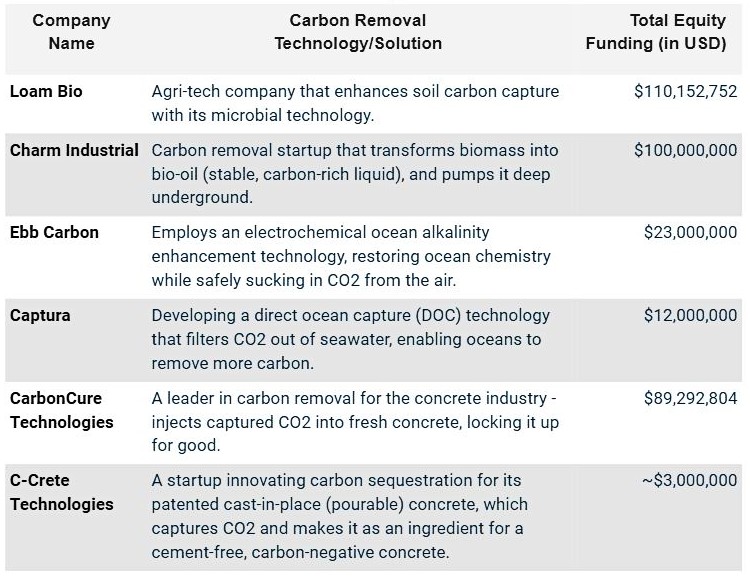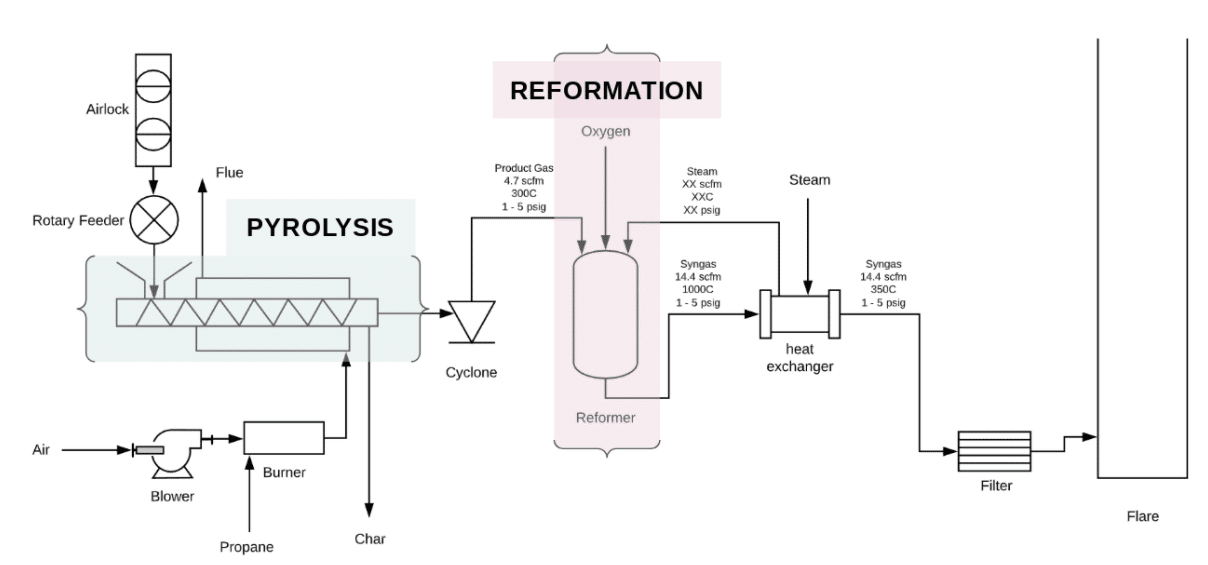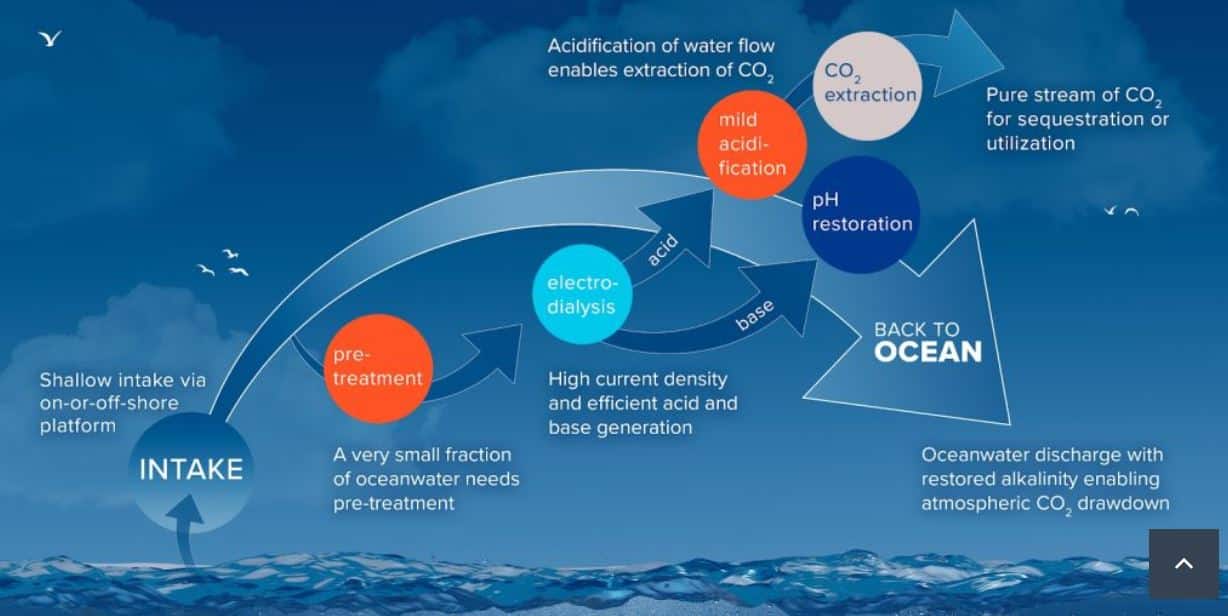The urgency to do something with the surplus of carbon in the atmosphere led to a surge in innovative approaches aimed at securing stable and contained storage solutions.
Notably, a number of startups in the carbon removal sector have drawn substantial investor interest, attracting hundreds of millions in funding over the course of this year, according to Crunchbase data. From underground storage to concrete mix and ocean sequestration, their strategies have gone beyond concepts to viable carbon removal solutions.
Recent funding trends reveal a notable increase in financing activities related to carbon removal initiatives. This surge in investment signifies a growing recognition to explore alternative solutions, considering the slow uptake of clean energy sources.
It further highlights the pressing need to fast-track the deployment of effective carbon reduction measures alongside existing clean energy efforts. Here are the startups with interesting carbon removal technologies, broken down by the places where they store the carbon.
Stowing Carbon in Soil
One common place to store carbon is in the soil. While capturing carbon through soil won’t be enough to remove what’s already in the air, it does help reduce emissions.
However, this would not be an easy task for most farmers, especially in cropping systems. This is where Loam Bio’s solution comes in to help farmers adopt farming practices that sequester more carbon.
The Australian startup aims to improve the quality and quantity of soil carbon capture via its unique microbial technology. Loam Bio, which closed a $73 million Series B round in February, said that its carbon sucking technology can turn croplands into giant carbon sinks.
Plants or crops do absorb CO2, but a San Francisco-based carbon removal startup, Charm Industrial, offers a different solution. It takes waste biomass, transforms it into bio-oil (stable, carbon-rich liquid), and then pumps it deep underground for permanent storage.
The company bagged $100 million in Series B funding for the goal of putting oil back underground. Here’s how its carbon removal technology works:
Sucking-in Carbon Through the Ocean
Recently, a trending way to store carbon is through the ocean. A couple of startups are developing technologies to capture and store carbon in this body of water.
On the list are two names that capture investors’ eyes – Ebb Carbon and Captura.
California-based Ebb Carbon, founded by former executives of Google X and Tesla, secured a $20 million Series A funding. The ocean-based carbon removal company claims to offer a solution to remove carbon at the gigaton scale.
Ebb is using an electrochemical ocean alkalinity enhancement technology, which speeds up the natural process of ocean alkalization that restores ocean chemistry while safely sucking in CO2 from the atmosphere.
Another startup that believes in the power of the ocean is Captura, also based in California. The carbon removal company is developing direct ocean capture (DOC) technology that filters CO2 out of seawater, enabling oceans to remove more carbon.
Captura’s process uses only renewable electricity and seawater to remove CO2 from the air, with no by-products and no absorbents. Their technology attracted $12 million from investors.
Locking Away Carbon in Concrete
Buildings, particularly those made from concrete, are considered as one of the major contributors to greenhouse gas emissions. That’s mainly because traditional Portland cement is responsible for emitting huge amounts of CO2 (about 8% of global GHG emissions).
Thus, several startups are creating ways to make low-carbon concrete and even carbon-negative. CarbonCure Technologies, a Nova Scotia-based company that’s backed by Amazon and Microsoft, is a leader in carbon removal for the concrete industry and a provider of high-quality carbon credits. Each ton of removed CO2 generates a credit.
The startup injects captured carbon into fresh concrete, locking it up so it doesn’t return back to the atmosphere. Its innovative technology attracted $80 million in a new equity round led by Blue Earth Capital in July.
Another significant player in this field is C-Crete Technologies, a startup innovating carbon sequestration for its patented cast-in-place (pourable) concrete. Its technology captures CO2 and makes it as an ingredient for a cement-free, carbon-negative concrete.
Each ton of C-Crete’s cement-free binder can prevent 1 ton of carbon emissions. Its technology attracted two separate funding support from the U.S. Department of Energy – almost $1 million and $2 million.
While some of these startups have demonstrated that their technologies work in capturing and removing carbon from the atmosphere, scaling them up remains unproven and carries a major risk as climate experts noted.
Yet, the massive investments poured into their innovative models and technologies speak of confidence in technology deployment and scalability.
In summary, here are the carbon removal-focused funded startups rounded on the list.





